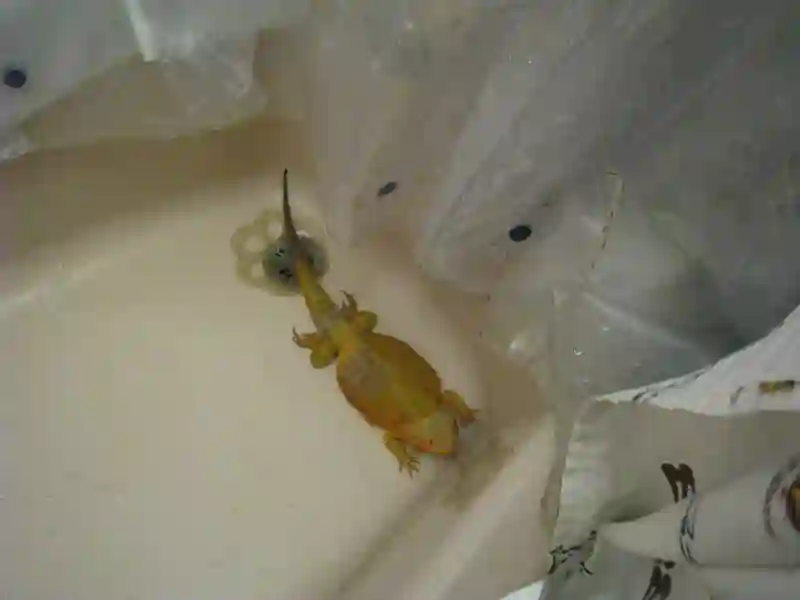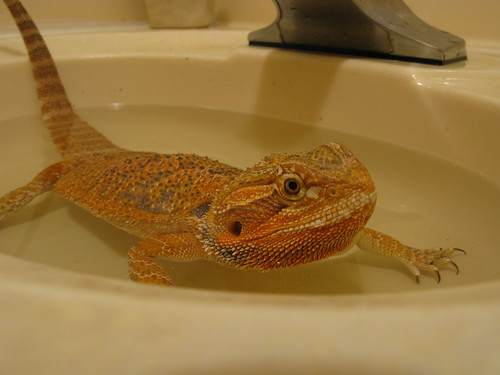Bearded dragons are one of the most popular reptiles kept as pets, and for good reason. These docile creatures are known for their friendly personalities and ease of care.
However, ensuring that your bearded dragon is healthy and happy requires more than just providing food and water. Proper hygiene is essential to preventing diseases and infections, and it is the responsibility of every reptile owner to maintain a clean and hygienic environment for their pet.
In this article, we will provide comprehensive hygiene tips for bearded dragon owners. From enclosure maintenance to feeding and watering practices, we will cover all the essential aspects of maintaining a clean and healthy environment for your pet.
We will also discuss the importance of shedding and nail care, as well as the prevention of parasites and other common health issues.
Whether you are a seasoned reptile owner or a first-time bearded dragon pet parent, this article will provide the information you need to keep your pet clean and happy for years to come.
Key Takeaways
- Proper hygiene practices, including enclosure maintenance and regular deep cleaning, are crucial for preventing diseases and infections in bearded dragons.
- Regular trimming of nails and monitoring shedding can keep bearded dragons comfortable and healthy.
- Stuck shed can be prevented by proper bathing and using shedding aid products.
- Providing proper nutrition, hydration, and promptly removing uneaten food and waste can prevent costly vet visits and keep bearded dragons healthy and happy.
Enclosure Maintenance
Enclosure maintenance is crucial for ensuring the hygiene and health of bearded dragons. It involves a range of tasks such as deep cleaning, disinfecting the tank, trimming their nails, monitoring shedding, and removing uneaten food and bugs.
Regular cleaning and disinfecting of the tank is essential to prevent the buildup of bacteria, parasites, and fungal infections. Bearded dragons are susceptible to infections and parasites, which can cause serious health issues if left untreated.
It is recommended to deep clean the enclosure at least once a month using a reptile-safe disinfectant. This involves removing all items from the tank, washing them with hot water and soap, and disinfecting them with a reptile-safe disinfectant.
Trimming the nails of bearded dragons is also important to prevent discomfort and injury. Long nails can cause pain and discomfort when walking or climbing, and can even lead to injuries if they get caught on something.
Shedding is a natural process for bearded dragons, and monitoring it is crucial to prevent shedding issues. Stuck shed can be prevented by proper bathing and using reptile shedding aid.
Uneaten food and bugs should be removed promptly to prevent them from hiding in the tank and causing hygiene issues. The water bowl should also be cleaned daily to prevent stagnant water, which can harbor bacteria and parasites.
Feeding and Watering
When maintaining proper nutrition and hydration for pet bearded dragons, it is important to regularly offer fresh salads and clean water bowls. Daily salad feeding is recommended, and uneaten salad should be discarded to prevent it from rotting and attracting pests.
Additionally, the water bowl should be cleaned daily to prevent stagnant water and ensure that the dragon has access to clean water. The size of the water bowl should be appropriate for the size of the dragon, and it should be placed in a location that is easily accessible to the dragon.
In addition to regular cleaning of the water bowl, it is important to develop a cleaning routine for the entire enclosure. This includes removing any uneaten bugs from the tank to prevent them from hiding and causing hygiene issues, as well as cleaning up waste promptly to prevent parasites and salmonella.
Shedding and Nail Care
Proper shedding and nail care are crucial for maintaining the health and well-being of pet bearded dragons.
Bearded dragons shed their skin in little pieces, not all at once. Shedding happens regularly and is a natural process for these reptiles. However, stuck shed can become a problem if not handled properly.
Here are some tips for proper shedding care:
- Monitor shedding: Keep an eye on your bearded dragon’s shedding process. If you notice any stuck shed, provide a warm bath and gently rub the affected areas with a soft cloth to remove the skin.
- Bathing techniques: Regular baths can help your bearded dragon shed more easily. Use lukewarm water and a reptile-shedding aid product if necessary.
- Nail care: Trim your bearded dragon’s nails regularly to prevent discomfort or injury. Use a nail clipper specifically designed for reptiles and be careful not to cut the quick.
- Shedding aid products: Use reptile shedding aid products to help your bearded dragon shed more easily. These products can soften the skin and make the shedding process less stressful for your pet.
By following these tips, you can ensure your bearded dragon sheds properly and stays healthy. Good hygiene practices can prevent costly vet visits and keep your pet happy and comfortable.
Frequently Asked Questions
Can bearded dragons get sick from drinking stagnant water?
Stagnant water poses health concerns for bearded dragons as it may contain harmful bacteria and parasites that can cause various illnesses. It is recommended to clean the water bowl daily to prevent the risks of stagnant water and maintain good hygiene for the pet.
How often should bearded dragon owners handle their pets?
The frequency of handling bearded dragons varies depending on the individual and their temperament. Regular socialization can help reduce stress and improve their overall well-being. However, it is important to handle them properly and avoid excessive handling to prevent injury or stress.
Are there any safe cleaning products that can be used to disinfect the enclosure?
Proper disinfection techniques are critical for maintaining a clean and healthy bearded dragon enclosure. Natural alternatives include vinegar and water or a diluted bleach solution. It’s important to thoroughly rinse and dry all surfaces to prevent any harmful residue.
Is it safe to use sand as substrate for bearded dragons?
Sand substrate for bearded dragons can provide a natural environment, but it can also cause impaction if ingested. Alternatives include tile, paper towels, and bioactive setups. The pros and cons of each option should be carefully considered before making a decision.
What are some signs that a bearded dragon may have parasites or fungal infections?
Parasite detection in bearded dragons involves fecal testing and veterinary examination. Fungal infection symptoms may include skin lesions and respiratory distress. Regular hygiene practices and prompt veterinary care can prevent and treat these conditions.



Leave a Reply